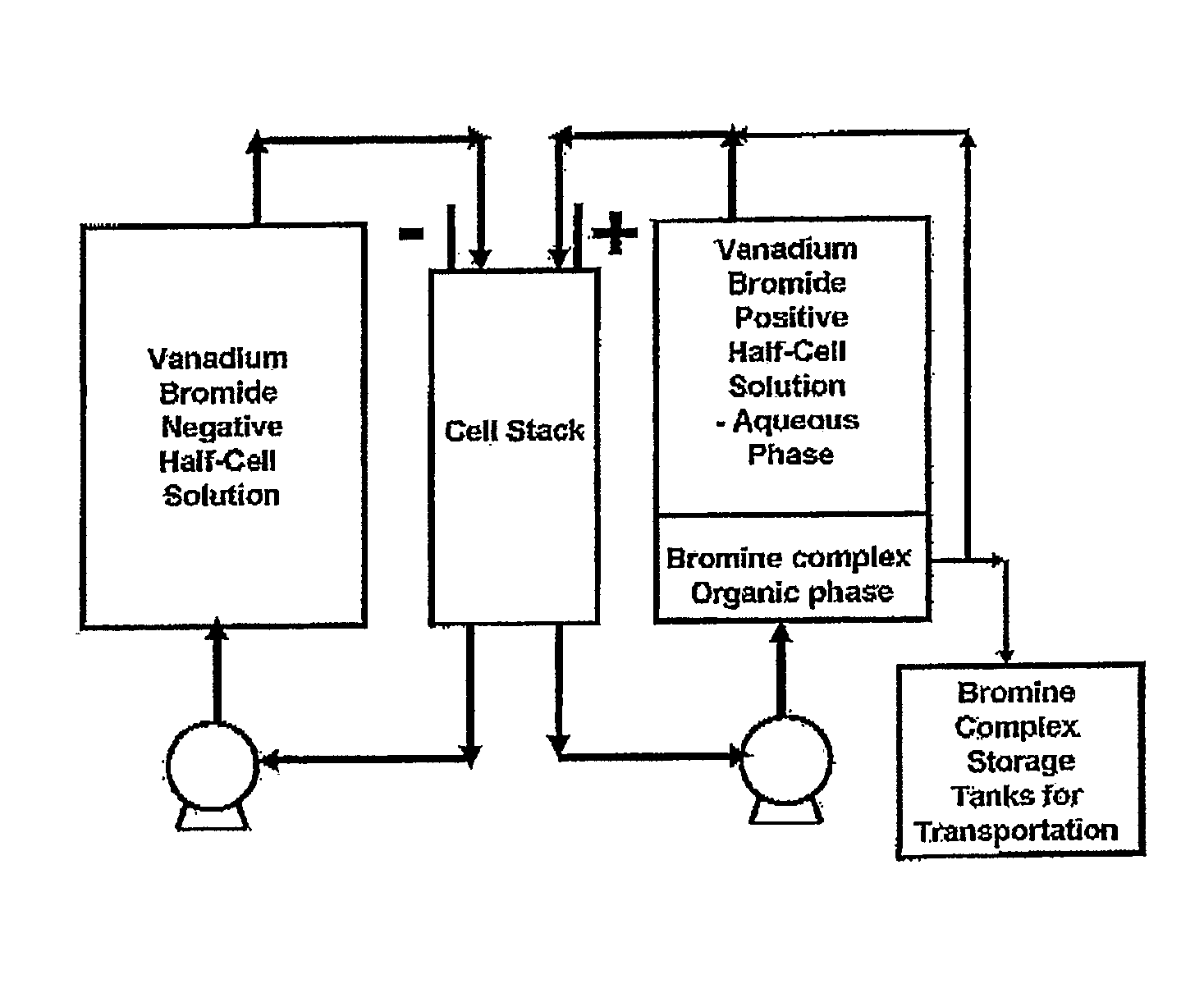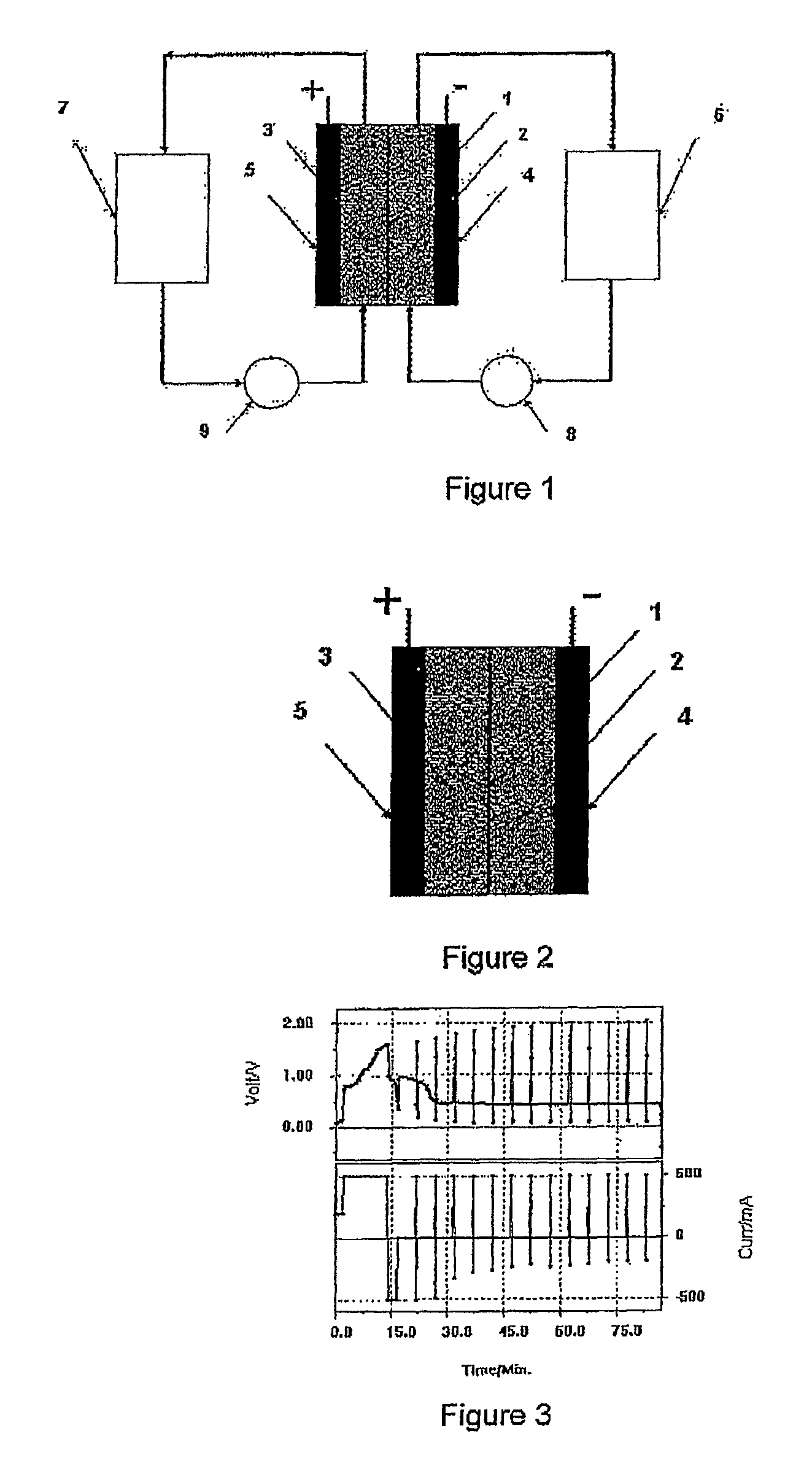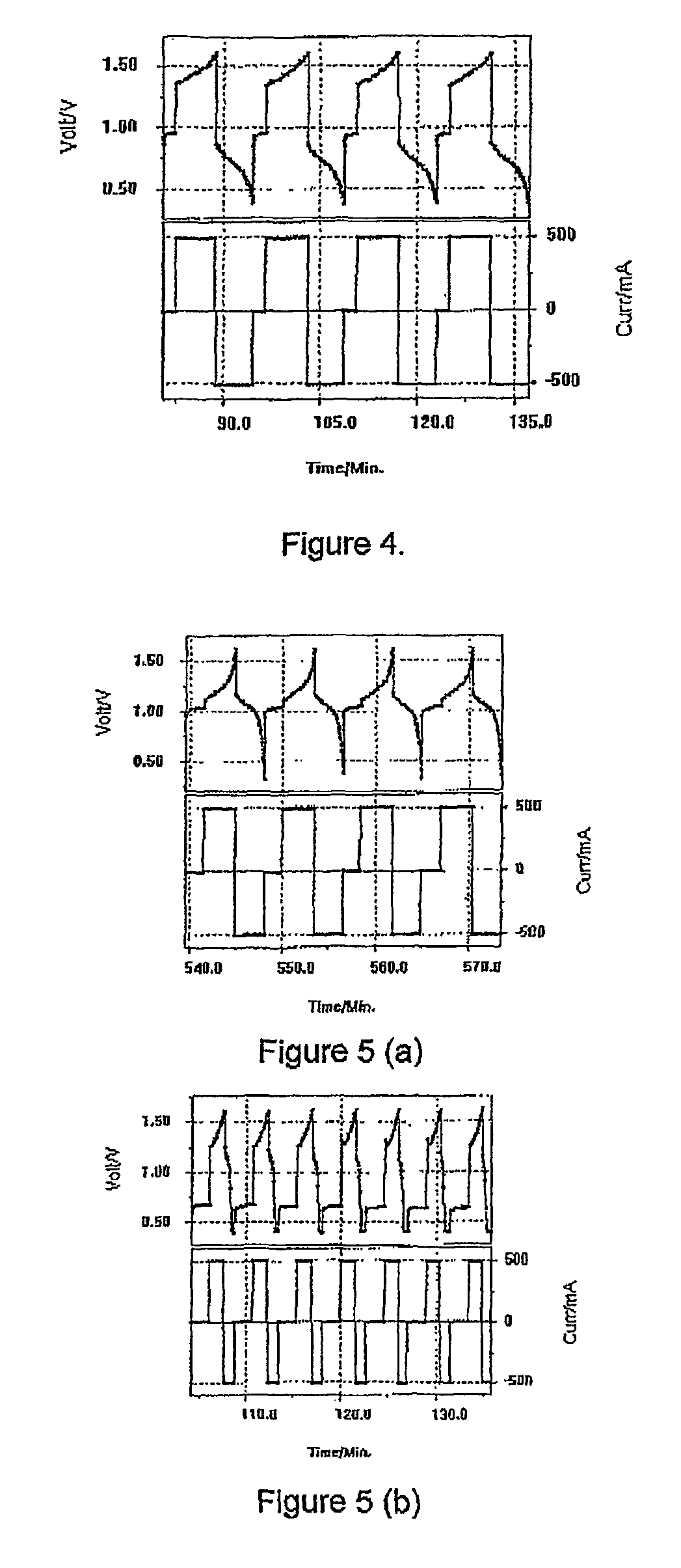Perfluorinated membranes and improved electrolytes for redox cells and batteries
a technology of perfluorinated membranes and electrolytes, which is applied in the direction of sustainable manufacturing/processing, indirect fuel cells, cell components, etc., can solve the problems of capacity loss that cannot be corrected, unstable state of charge of positive and negative half-cell electrolytes, etc., and achieves low linear expansion, excellent performance, and reduced swelling. significant
- Summary
- Abstract
- Description
- Claims
- Application Information
AI Technical Summary
Benefits of technology
Problems solved by technology
Method used
Image
Examples
example 1
[0128]A piece of polysulphone anion exchange membrane was placed into a static vanadium bromide redox cell. FIG. 3 shows the voltage versus time curves obtained at a current of 500 mA and electrode area of 25 cm2. No discharge curves could be obtained
example 2
[0129]A piece of Nafion 112 membrane was placed into a Vanadium Bromide static cell comprising 2 M Vanadium in 6 M HBr plus 2 M HCl electrolyte and graphite felt electrodes of area 25 cm2. The cell was cycled at a current of 500 mA and typical charge-discharge curves are presented in FIG. 4. The Nafion initially showed a high voltage resistance and the following results were obtained:[0130]Voltage Efficiency—47%[0131]Columbic Efficiency—91%
[0132]After only a few hours of cycling however, the cell capacity dropped dramatically and further cycling could not be obtained.
[0133]When the Nafion 112 membrane was placed in a flow cell containing 70 ml of the same electrolyte in each half-cell, the positive electrolyte began to cross over to the negative half-cell during the initial charge cycle and continued to transfer from the positive half-cell with further cycling, requiring regular manual transfer of solution back to the positive to maintain the electrolyte levels in the two solution r...
example 3
[0135]A perfluorinated cation exchange membrane prepared by casting from a solution of a resin with EW (Equivalent Weight)=1032 g resin / eq SO3−, so the ion exchange capacity=1 / EW=0.97 meq SO3− / g resin, was tested in a V / Br static cell. The 50 micron thick cast perfluorinated membrane had the following properties:[0136]Nominal Thickness: 2 mil or 50 microns[0137]Acid Capacity: 0.97 mmol / g[0138]Conductivity: 0.1 S / cm (25° C.)[0139]Water Uptake: 50% (100° C., 1 h)[0140]Linear Expansion: 1% (23° C., from 50% RH to water soaked)[0141]Tensile Strength: 37 MPa (50% RH, 23° C., Isotropy)[0142]Melting Point: 219° C.
[0143]The membrane was soaked in sulphuric acid at 50° C. for 1 hour and then placed in a static V / Br cell for cycling. The Vanadium Bromide (V / Br) static cell comprised 2 M Vanadium in 6 M HBr plus 1.5 M HCl electrolyte and graphite felt electrodes of area 25 cm2. The cell was cycled at a current of 500 mA. This showed good, stable results with the following efficiencies as illus...
PUM
| Property | Measurement | Unit |
|---|---|---|
| conductivity | aaaaa | aaaaa |
| conductivity | aaaaa | aaaaa |
| melting point | aaaaa | aaaaa |
Abstract
Description
Claims
Application Information
 Login to View More
Login to View More - R&D
- Intellectual Property
- Life Sciences
- Materials
- Tech Scout
- Unparalleled Data Quality
- Higher Quality Content
- 60% Fewer Hallucinations
Browse by: Latest US Patents, China's latest patents, Technical Efficacy Thesaurus, Application Domain, Technology Topic, Popular Technical Reports.
© 2025 PatSnap. All rights reserved.Legal|Privacy policy|Modern Slavery Act Transparency Statement|Sitemap|About US| Contact US: help@patsnap.com



